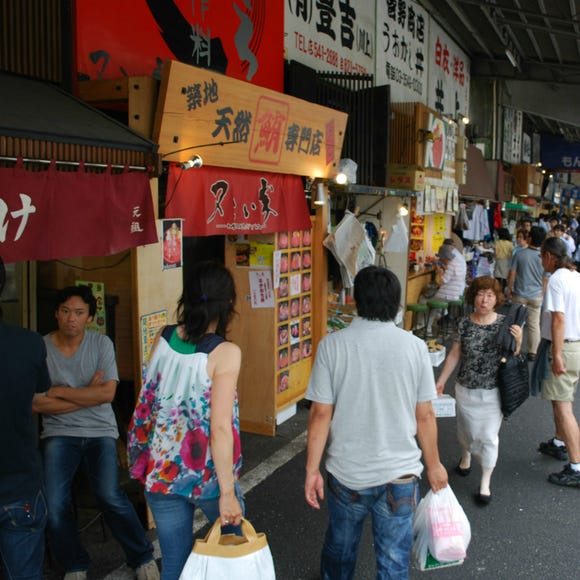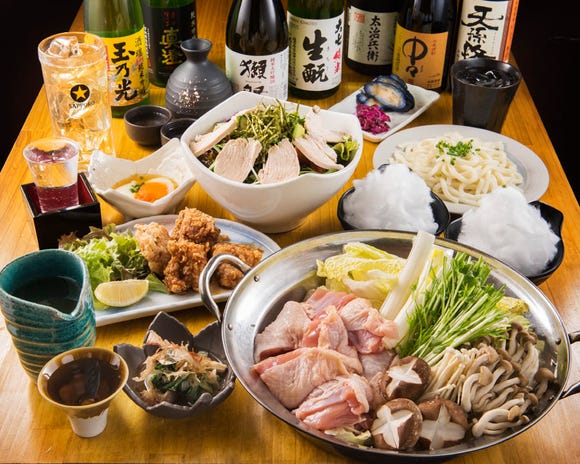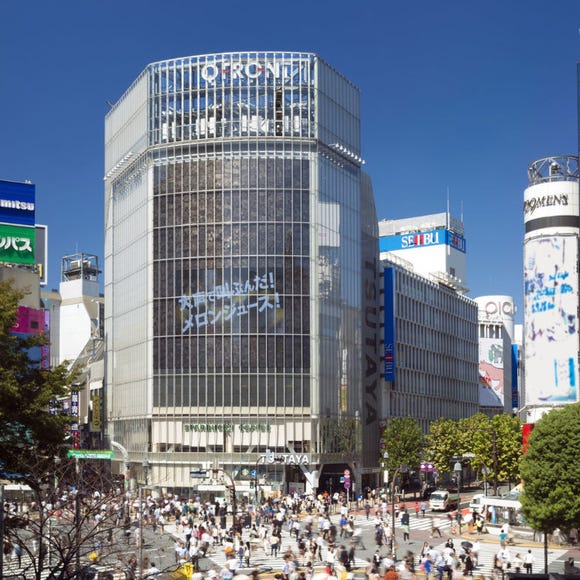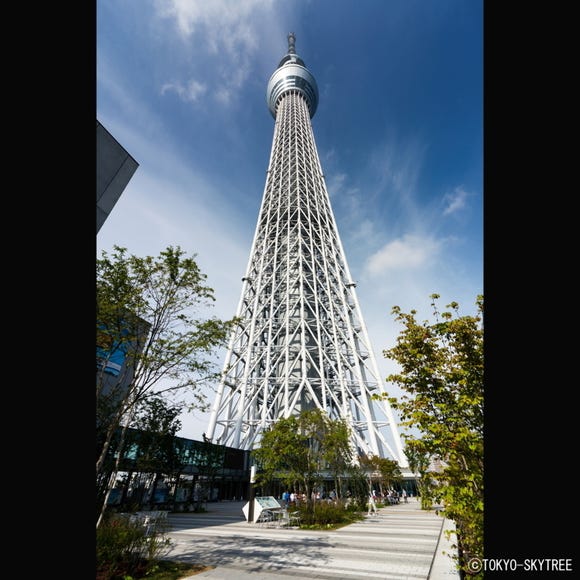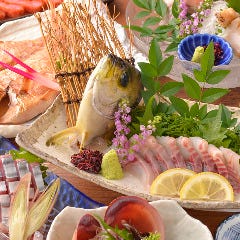
No matter where you’re from and no matter who you are, the Real Izakaya Nobu welcomes you with open arms! Enjoy the dishes that conquered the hearts and stomachs of the characters of Isekai Izakaya ~Koto Aitheria no Izakaya Nobu~, the latest gourmet hit anime showcasing Japan’s delicious pub culture. The best part about this? They’re vegetarian, vegan, and halal!
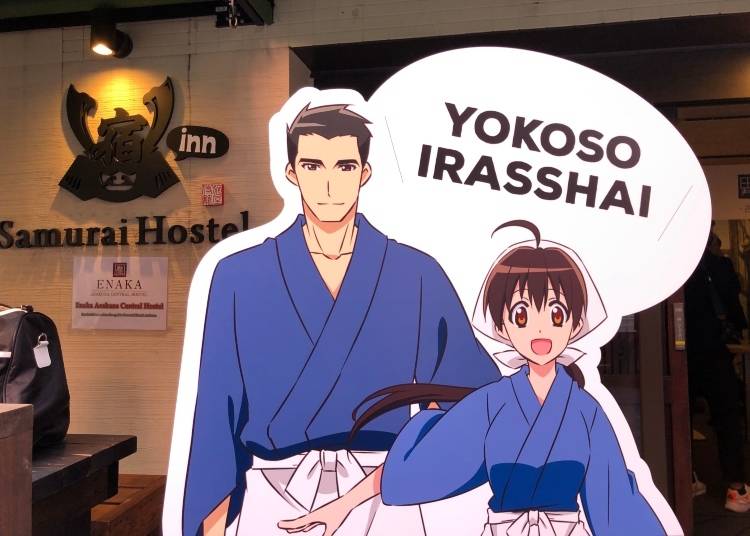
To celebrate the opening of the Real Izakaya Nobu at Asakusa Samurai Yatai, we talked to the author of the original Isekai Izakaya Nobu series, Natsuya Semikawa, as well as the chef who is the creative genius behind the vegan and halal-friendly menu, Katsumi Kusumoto. Let’s hear about how the restaurant came to be, what dishes are on the menu, and thoughts about food diversity!
Isekai Izakaya Nobu × Asakusa Samurai Stall Pop-Up Restaurant Collaboration
Special Commemorative Interview Featuring Natsuya Semikara and Katsumi Kusumoto
Izakaya are traditional pubs that are an inherent part of Japan’s rich food culture. However, not everyone gets to enjoy this experience due to religion, lifestyle, allergies, and other dietary restrictions. The key to opening this delicious facet of Japanese food was to combine “delicious food” with “hospitality!”
First of all, would you please introduce yourselves
Semikawa: My name is Natsuya Semikawa. I am a light novel writer and the author of Isekai Izakaya Nobu.
Kusumoto: I am Katsumi Kusumoto, chef and owner of the reservation-only restaurant Kusumoto in Nishi-Azabu.
Thank you for talking to us today! Kusumoto-san, what did you find particularly interesting regarding the collaboration with Isekai Izakaya Nobu?
Kusumoto: When I first read the light novel, the sounds especially stood out to me. That goes for both the book and the anime, but being able to evoke an authentic sizzling sensation, almost being able to feel the temperature and hear the sound just from words, I found that incredibly interesting as a creator.
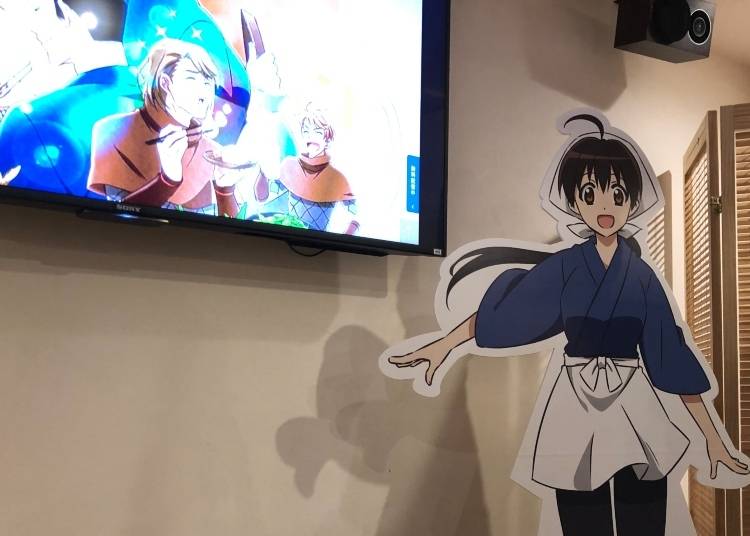
Did you add these expressions of sound and temperature consciously, Semikawa-san?
Semikawa: I think food is not only about eating, but rather the sounds during cooking, the anticipation, that all is part of it. Especially when it comes to restaurants. Looking at a menu while wondering what exactly will be served, hearing a faint sound and thinking “Something is being fried.”
Someone behind you bites into their dish and you hear that characteristic crunch. Then you take the first bite yourself, the same crunch in your ears while the texture and flavor spreads in your mouth... It is often said that food is enjoyed with all five senses and that is what I am consciously aware of when writing. I think that the anime expressed this wonderfully, despite it being so difficult to describe.
As a chef, are you conscious of elements such as color, aroma, and sound of food as well?
Kusumoto: I am indeed. Speaking of the five senses, smelling and tasting are a very direct part of cooking. Hearing is part of the live cooking experience. I liked that the anime paid a lot of attention to sounds in particular, even expressing them with written characters.
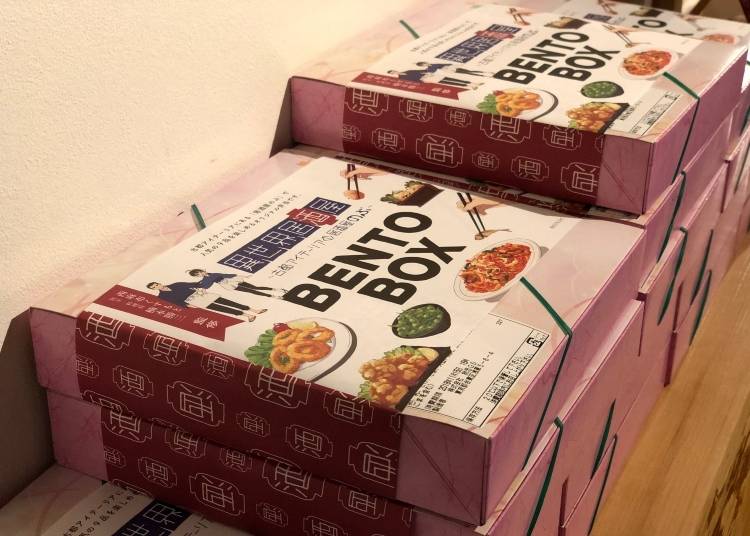
What did you pay particular attention to when you created the collaboration bento box?
Kusumoto: I wanted to make something that is cooked in the kitchens of both izakaya and Japanese households, something a mother would put in the bento of her child, so to speak, without being limited by traditional Japanese cuisine. It’s a Japanese-style lunch box but it also features Napolitan pasta.
Semikawa-san, what was your impression when you first saw the menu for the lunch box?
Semikawa: I felt that it was different from the bento that are commonly sold, in a good way. I also think it stays very true to the original work. It is an assortment of dishes that are not traditionally part of Makunouchi or Shokado bento.*
For me, it’s a bento that has me wonder “What is that there?” in a fun and exciting way. Bringing this bento on a Shinkansen train alongside a “Toriaezu Nama” Beer sounds great! (laughs)
Kusumoto: The bento’s dishes do match beer, don’t they?
Semikawa: It is very izakaya. Besides that, I love that the different dishes are a genuinely delicious selection. Snacks accompanying drinks are always delicious with their rich taste, but that would be too much for a bento. It’s an exquisite balance, really, enjoyable with a drink but even children will like the taste. It’s very delicious.
*Two traditional bento styles.
What would you like people to enjoy the most about your bento?
Kusumoto: I think the real joy of bento boxes is the gorgeousness as you open the lid. Etiquette dictates that you shouldn’t hover your chopsticks over the food, but I would love it if people took it all in after opening the box, wondering “What should I try first?” There are 12 dishes in nine little compartments, so you really don’t know where to start. (laughs)
Semikawa: Honestly, its size is just perfect as well.
The bento is what kicked off the Isekai Izakaya Nobu collaboration at Asakusa Samurai Stall. How do you like the popup restaurant?
Semikawa: It’s amazing. When I think of izakaya, I have that strong image of sitting at a counter or a table and it’s obvious that this is where the authentic charm can be found, but not everybody can enjoy it that way.
That’s why I really like this buffet-style, making the dishes more approachable to people from outside of Japan and letting them select what they want to try without hassle. When it comes to the taste, it really is as authentic as it gets, and I genuinely believe that people will have a wonderful time here.

What kind of things did you have to consider as you created the buffet-style izakaya to introduce this part of Japanese food culture to people from around the world?
Kusumoto: The buffet style certainly caters towards international guests, but even Japanese izakaya that serve obanzai* line up the food at the counter to be picked up from there, right? That was a big inspiration and we tried to incorporate that image into our buffet.
Semikawa: It creates a wonderful atmosphere.
Kusumoto: So, we thought about how to best let people experience authentic izakaya culture no matter where they are from or what religion they have. The dishes are vegan, so we used soy meat for “karaage” fried chicken. Of course, the juiciness of will not be quite the same, but a broad variety of people can enjoy it and that is exactly what we wanted.
Semikawa: I ate this soy meat for the first time when I tried samples of the buffet dishes. The texture is really interesting, and I thought “Yup, that’s it.” I have tried several vegan dishes before, but I always found them a bit lacking in oil and juiciness. With that experience, I think the deep-fried soy meat is an interesting attempt! The mochi-kinchaku (glutinous rice in a pouch of fried tofu) are also very good. I did not even realize it but that is a vegan dish by default.
*Light Kyoto-style home cooking that focuses on vegetables and marinated dishes.
How did you come up with the overall composition of the menu?
Kusumoto: I picked up dishes from the original book and thought how to make them vegan and halal-friendly. The main charm of Nobu’s menu are the fish dishes, however...
Semikawa: Which vegans obviously cannot eat...
Kusumoto: That was especially hard because I wanted to authentically express the unique charms of the food, shishamo (smelt) for example.
Semikawa: Shojin-ryori is a kind of Japanese cuisine that does not use any meat, but what does making other Japanese food vegan look like? I think one answer to this question can be found here.

The vegan collaboration menu is different from what is served at a regular izakaya. How does it appeal to Japanese guests who aren’t vegan?
Kusumoto: In all honesty, I’d like people to just drop by without me saying anything about such differences. Instead of cooking specifically for vegan and Muslim people, I firmly believe that these dishes are for everyone and can easily become mainstream. If you’re thinking “Ah, I drank too much yesterday...” or “I should eat healthier,” do come to Asakusa Samurai Stall. I personally am not vegan, but that does not keep me from wanting to make delicious, healthy food without any animal products. That is what I want the guests to feel as well.
Semikawa: Eating healthy at restaurants always evokes the image of being expensive and very limited when it comes to dishes. However, this buffet offers a rich variety of food and it is reasonably priced as well, so this is a great attempt, I think.
Kusumoto: I’d like you to think of it as an honest, down-to-earth alternative.
Semikawa: In a positive sense, I think that a place where many international guests gather is indeed a different world for a lot of Japanese people. Enjoying an unfamiliar kind of food in such an international environment has the potential to create something new.
Kusumoto-san, how did you come to be involved with diverse cooking?
Kusumoto: I started doing it at my restaurant “Kusumoto” in Nishi-Azabu five years ago. At one point, one of my guests said “Why don’t you look into Islam’s halal food?” I did and learned a lot. As the very first thing, I realized that “pork and alcohol are forbidden,” but back then I had the mindset of “taking out,” simply cooking dishes without these ingredients.
They weren’t great, though, the soups tasted too light and because people don’t drink alcohol they also don’t know about Japan’s shime dishes*. So instead of simply learning about the ingredients that are forbidden, I learned more about the food culture, thinking about how I can make my cooking tasty for Muslim people. Other chefs may say “That’s not Japanese food” about the dishes that I make. But even Japan has a history of incorporating other food cultures into its own, so I think it’s important to offer Japanese food to people from other cultures as well.
Semikawa: Even “Japanese food” is becoming a lot more flexible, isn’t it. I think the expression wasn’t shaped until around three generations ago. If you think about it from that perspective, the attitude that we should not change this “Japanese food” and its dishes to offer them to a more diverse range of people is nonsense. Tofu as we know it, for example, isn’t generally eaten as it is in the United States. Instead, people may drain the water from it and eat it like cream cheese.
I have heard of Inuit people seasoning their raw meat with soy sauce. Japanese food is traveling and being adapted around the world, and I think we can be very proud of that. And the people enjoying the food don’t have to know the roots and history of seasonings and ingredients. Culture changes all the time, and I think the definition of culture itself is a flow that constantly changes its shape.
Take Chinese cuisine that came to France and become known as “Nouvelle Chinoise” in Japan, that’s also culture changing into a different shape. Tonkotsu (pork bone broth) ramen are also popular in France, which is also Japanese cuisine with roots in China. What we Japanese people now eat as katsudon was originally cutlet from France, covered with egg and sauce and served on a bowl of rice in Japan. You wouldn’t necessarily call it traditional Japanese food, but it is Japanese cuisine nonetheless. In other words, I think it’s great as long as people enjoy delicious food, really.
Kusumoto: That’s exactly right.
Semikawa: I also think that it is important to look back on the roots of traditional Japanese cuisine and we should protect and preserve these traditional ways, but it is equally important that people eat deliciously. There are changes from area to area, but food also changes through time.
The brown rice diet was lost because white rice spread, but with people being more aware of healthy eating, dishes that originally had brown rice in them were revisited and appeared more and more. Food has always changed in that way, so there is no need to inflexibly stick to something.
*Shime refers to the last meal of the evening, often enjoyed late at night after several drinks.
The food of every country has undergone changes over time, but for this collaboration, you tried to convey Japanese food culture by making the dishes as authentic as possible. Kusumoto-san, what methods do you have as a chef to accomplish that?
Kusumoto: My premise is that I always ask my customers for information about them as they make a reservation for “Kusumoto” in Nishi-Azabu. I do the cooking based on that information. Dashi (soup), for example. I can make dashi out of kelp and bonito, but my guest might say “It has no taste” and not enjoy it. If I add soy sauce, it could be too salty for them. It doesn’t match their taste.
After a lot of trial and error, I realized that studying food culture is very important, as I mentioned earlier. For guests from Southeast Asia, I tried incorporating the fragrance of kaffir lime leaves and lemongrass from Tom yam kung into my soup. Just by changing the aroma, people were receptive of my dashi. People from the Middle East are often skeptical about meat in Japan, so I created a dish that is similar to hummus.
Semikawa: A paste made from chick peas, right?
Kusumoto: Instead of serving regular hummus, I looked at the individual ingredients and thought about them. Chick peas, sesame paste, and citrus – I replaced those with soybeans, sesame, and yuzu, all traditional ingredients of Japanese cuisine. My guests saw the dish as I served it, said “This is hummus” and enjoyed it. In that way, my guests also realize that I understand their food culture and can relax. Actually, I think that one of the most important aspects of serving food is the question “to what extent will my guest trust me.”
Semikawa: Which is a cross-cultural exchange.
Kusumoto: It is. I firmly believe that gaining such trust with the method mentioned above is what omotenashi (Japanese hospitality) means.
Semikawa: I like the word gochiso (feast, treat, a special meal). It represents “making an effort for a certain purpose.” You make an effort of knowing about your guests, you make an effort of choosing the ingredients, you make an effort of pleasing your guest. By that, a meal becomes gochiso. This is also omotenashi. As well as going out of one’s way to getting to know someone, just like Kusumoto-san said.
Kusumoto: To offer this kind of hospitality to our guests, it is important to think about how we can provide stress-free places and food. Regarding Asakusa Samurai Stall, I wanted to create a space where people of any religion of lifestyle can casually drop in without hesitation. “We cannot serve that today because we have Muslim customers,” for example, is something that I hear quite frequently. However, not every Muslim is a vegetarian and if they want to enjoy meat, we want to offer that as well. Our goal is to cater to everyone’s needs and preferences.
Semikawa: It is important to have such a no-stress place.
Kusumoto: Of course, not every single restaurant has to be like that. However, this is a proposal that in Asakusa, a famous and popular tourist spot, there could be restaurants just like this one here.
About the “Nobu Bento Box”
The original collaboration “Nobu Bento Box” created by Chef Kuzumoto is also sold at Asakusa Samurai Stall. After indulging in authentic izakaya cuisine that is vegetarian, vegan, and halal-friendly, why not try the bento as well?
■ Isekai Izakaya Nobu Original Collaboration Bento “Nobu Bento Box”
An authentic bento lunch featuring nine dishes from the world of Isekai Izakaya Nobu.
Price: 1,280 yen (tax included)
Sold at: Asakusa Samurai Stall (1F of Samurai Hostel, next to Asakusa Public Hall)
*The photo is for illustrative purposes only.
Where you can enjoy the Izakaya Nobu pop-up restaurant!
■ Isekai Izakaya Nobu @ Asakusa Samurai Stall
Event period: November 16 (Friday) to December 16 (Sun)
Hours: 11:30 a.m. – 9:00 p.m.
Venue: Asakusa Samurai Stall
Address: 1-29-9 Asakusa, Taitō-ku, Tōkyō-to 111-0032
Map: https://r.gnavi.co.jp/mt1cvvs30000/map/
■ Menu Prices
Lunch: 11:30 a.m. – 4:00p.m., 90 minutes
・ Adults: 1,800 yen (2,800 yen with all-you-can-drink)
・ Children: 1,000 yen (children younger than elementary school age eat for free)
Dinner: 5:00 p.m. – 9:00 p.m., 90 minutes
・ Adults: 2,800 yen (3,800 yen with all-you-can-drink)
・ Children: 1,500 yen (children younger than elementary school age eat for free)
©NS/TKJ/AC
- Area
- Category
*Prices and options mentioned are subject to change.
*Unless stated otherwise, all prices include tax.
Limited time offer: 10% discount coupons available now!
Recommended places for you
-

15 Must-Try Sushi Restaurants in Tokyo (+5 Trending Areas to Explore for Foodies)
-

The CASIO S100: How CASIO's Masterpiece Calculator Redefines Business Elegance With Japan-Made Reliability
-

Where to Eat in Shibuya: 14 Must-Try Restaurants for Yakiniku, Sushi, Izakayas, Cafes and More
-

15 Must-Try Restaurants in Ikebukuro: From Aged Yakiniku to All-You-Can-Eat Sushi, Plus Adorable Animal Cafés
-

12 Unique & Fun Tokyo Food Tours to Enjoy in 2024
-

Where to Eat in Yokohama: 10 Must-Try Restaurants for Yakiniku, Izakayas, Unique Dining & More
-

Top 7 Popular Japanese Mushrooms That Are Both Tasty and Healthy
-
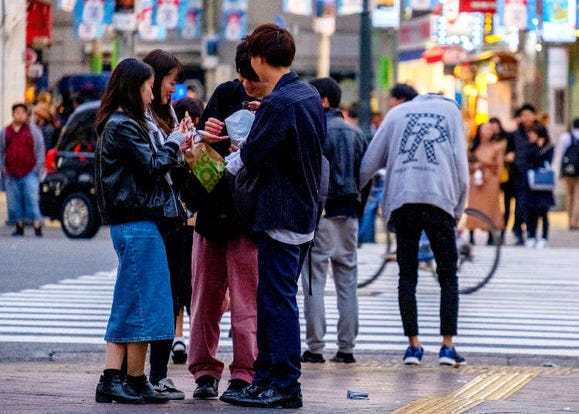
8 Unfamiliar (But Totally Normal) Customs in Japan!
-
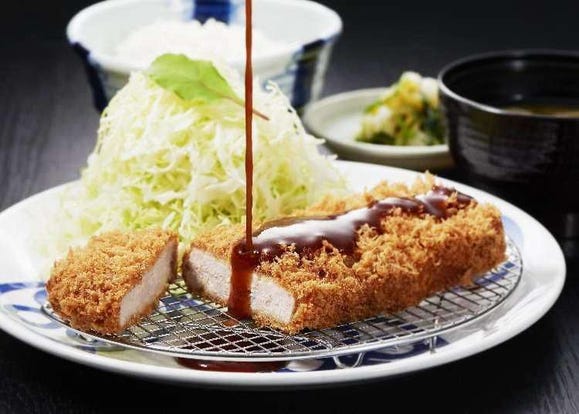
Budget Dining: 11 Popular Spots for Japanese Food in Yokohama and Tokyo!
-

Hot Food Trends for 2018: Check out Japan's Dish of the Year!
-
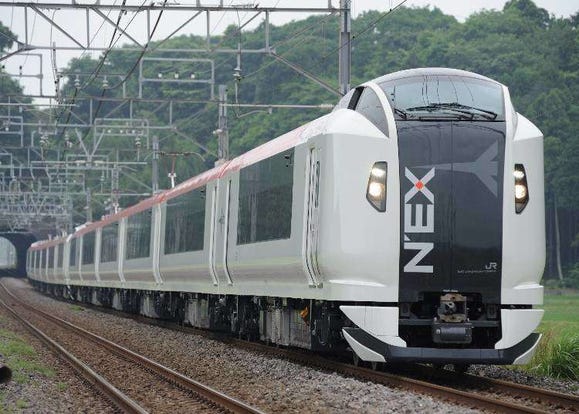
Getting From Tokyo Narita Airport (NRT) to Tokyo: Complete Guide
-
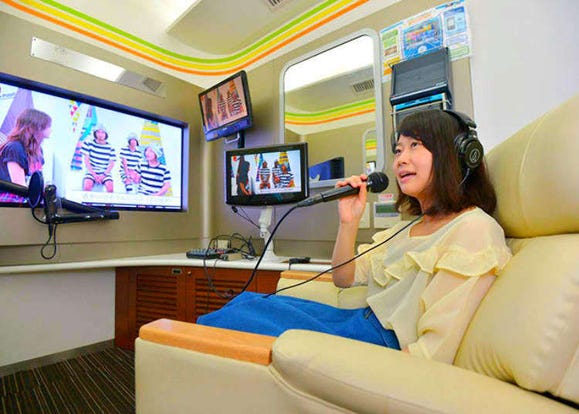
Spending Wonderful Time Alone in Shibuya - Free Cosmetics and a Hundred-Yen Bus!
- #best ramen tokyo
- #what to buy in ameyoko
- #what to bring to japan
- #new years in tokyo
- #best izakaya shinjuku
- #things to do tokyo
- #japanese nail trends
- #what to do in odaiba
- #onsen tattoo friendly tokyo
- #daiso
- #best sushi ginza
- #japanese convenience store snacks
- #best yakiniku shibuya
- #japanese fashion culture
- #best japanese soft drinks













